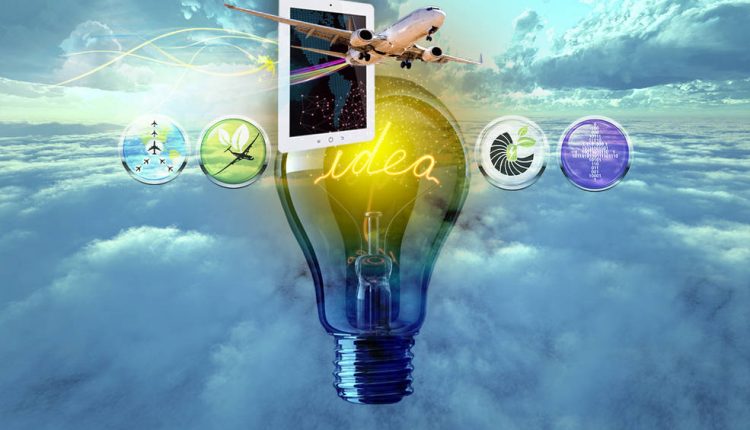
NASA Is Pondering These 6 Crazy Ideas For The Future Of Aviation
NASA has finally decided on six proposals to study transformative ideas that could expand what’s possible in aviation.

Back in April, 17 teams pitched their ideas to NASA managers. The ideas ranged from environmentally-friendly electric propulsion that uses an aircraft’s structure as a battery, to computer programs that safely allow new airplane designs to go more quickly from concept to use. NASA managers likened the scene to a television reality show in which aspiring entrepreneurs try to sell their ideas to a panel of savvy investors.
Now, NASA has finally decided on the six ideas that deserve some further development.
How do you feel about an electrically-propelled airliner whose fuselage is the battery? How about an Unmanned Aerial Vehicle (UAV) equipped with artificial intelligence programmed to respond to unforeseen situations the same way a human pilot would?
Here are the six wild ideas NASA is now researching:
- Multifunctional Structures with Energy Storage
What if an aircraft itself could serve as its own battery? Advances in materials, chemistry and nanotechnology might make this possible.![This conceptual art shows the main idea whether a vehicle with electric propulsion could use its structure to serve as a battery. (Photo via NASA)]()
This conceptual art shows the main idea whether a vehicle with electric propulsion could use its structure to serve as a battery. (Photo via NASA) - Autonomy Operating System for UAVs
Could it be possible for a UAV to respond to unforseen situations on its own, without remote human interaction, in ways that are as sure and predictable as would be made by a certified human pilot? - Mission Adaptive Digital Composite Aerostructure Technologies
What if technologies could be combined to create super-strong, lightweight composite structures also are able to be flexible and change their shapes as needed during a flight? - High Voltage Hybrid Electric Propulsion
A challenge in implementing electric propulsion on airliners (where electricity drives the engine fan to produce thrust, rather than petroleum-based fuel being burned in a traditional jet engine) is how to make the whole power distribution system as efficient and lightweight as possible.A potential solution may be found in advances in high voltage, variable frequency drives now used on the ground, which significantly reduces the size and weight of the required equipment.At the same time, researchers will investigate the use in the power distribution system of “self-healing” insulation. The idea is that if any deterioration in a high voltage electrical line begins, the resulting exposure of the electricity to chemicals bonded in the insulation would automatically repair the line – reducing in-flight problems and costly ground maintenance. - Learn to Fly
Using computer tools, could we get new airplane designs to fruition more rapidly by skipping ground-based testing? - Digital Twin
Can a computer model be built that accurately simulates and predicts how an aircraft or its individual components are affected by aging and ongoing operations such that a “digital twin” of a particular airplane can be created. This could help predict when problems might arise in order to prevent them from developing.![This conceptual art shows the main idea behind the "digital twin" – could a computer model be created that can predict how an aircraft or component will perform over time?]()
This conceptual art shows the main idea behind the “digital twin” – could a computer model be created that can predict how an aircraft or component will perform over time?
(Image via NASA)
“We may find none of these ideas will work,” said Doug Rohn, NASA’s Transformative Aeronautics Concepts Program director in the agency’s Aeronautics Research Mission Directorate (ARMD). “On the other hand, we could learn they look promising and worth additional longer-term investment.”
Funded under NASA’s Convergent Aeronautics Solutions Project, the studies will run for about two years. The project teams are made up of NASA employees from a variety of technical disciplines working across the agency’s aeronautics centers in Virginia, California and Ohio. Each study involves work across multiple centers and disciplines, and directly addresses at least one of NASA’s strategic research goals for aeronautics.
“The idea of the project is this is an investment process, where we’re using almost venture capital-like principles. But instead of money, our return on investment is in knowledge and potential solutions to future challenges in aviation,” Rohn said.
At the close of the project study period, successful ideas may be picked up and funded for additional exploration through other ARMD programs.


